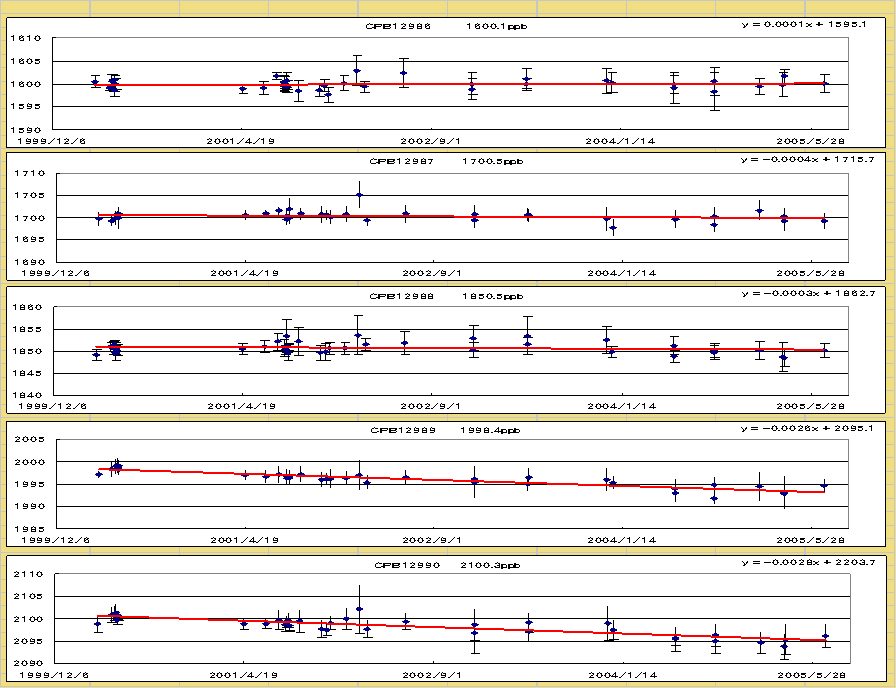|
|
Japan
Meteorological Agency (JMA)
|
|
Primary Standard Gases on Methane Reference Gas Intercomparison
|
|
|
| Recalculation for Drift on the Primary Standard Gases |
NOTE: JMA maintains the primary and secondary standard methane gases used to calibrate the working standard gases employed in the measurement of methane mole fractions. The reference gases used in intercomparison between different monitoring stations (or laboratories) are also calibrated against JMA's primary standards before and after the cylinders containing them are circulated among the monitoring stations. Since the quality of the primary standards strongly affects other standard gases calibrated against them, we regularly check for drifting by performing self-calibration of the primary standards and intercomparison not only with JMA's secondary standards but also with the primary standards of the Meteorological Research Institute in Japan. We recently identified a drift in the primary standards, and concluded that the secondary standards, whose methane mole fractions have been stable since they were first prepared, should be used to revise the drifted ratios of the primary standards (see the figure). The drift can be seen from the solid lines in the figure, which are least-squares fits. In response to this drift, we recalculated the mole fractions of the reference gases in all previous intercomparisons using the revised primary standard mole fractions. |
 |
|
Figure: Temporal changes in the methane mole fractions of the primary standards (intercomparison with the secondary standards). |

